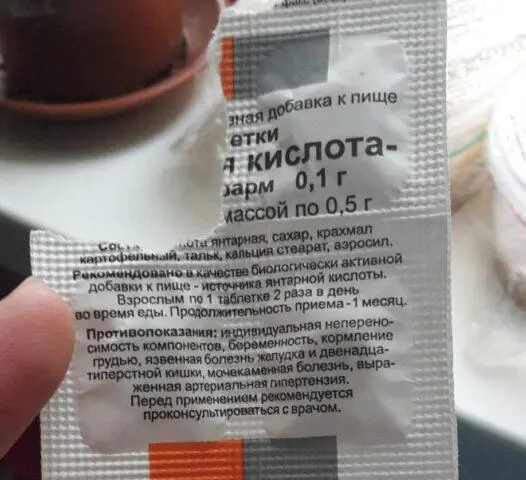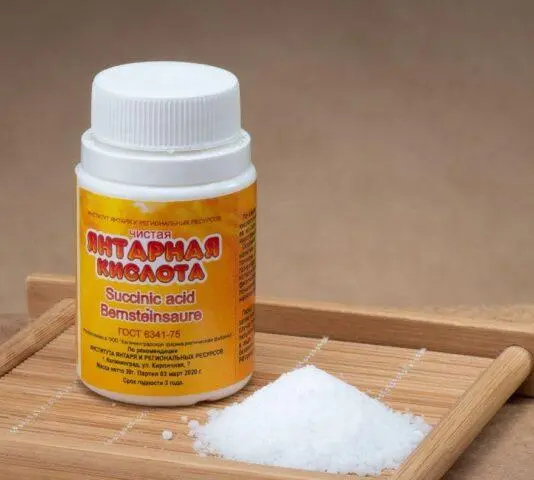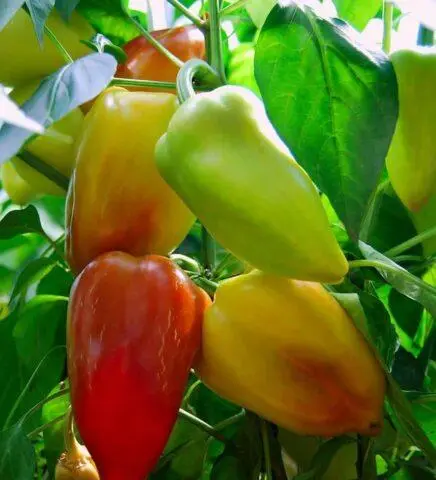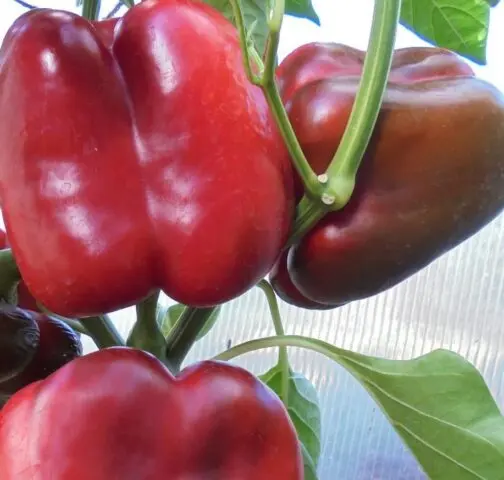Contents
Succinic acid for seedlings of pepper can be applied three times before transplanting into open ground. Seedlings are watered after picking (14 days before being transferred to the garden), as well as immediately before planting. This makes the plants more resistant to adverse weather conditions, as well as to many pests and diseases. Experienced gardeners recommend pre-soaking the seeds in a weak acid solution. Due to this, the percentage of germination is significantly increased.
Is it possible to water peppers with succinic acid
Succinic acid is an organic acid, the name of which is associated with the method of extraction – from amber. Chemical formula C4H6O4. This is a white crystalline substance, which is produced in the form of a powder or tablets. You can buy it both in stores for summer residents and in pharmacies (without a prescription).
It is quite possible to use it for watering and spraying peppers. The substance has a high biological activity. This is a small molecule that dissolves well in water, penetrates through roots, leaves and is absorbed by plant tissues.
It is involved in the processes of photosynthesis, cellular respiration, and metabolism. It also plays a role in the synthesis of DNA, protein compounds, amino acids, pigments and other vital components. Thanks to this, plants become more resistant to weather factors and pests. This increases the yield and even improves the taste of the fruit.
Why feed peppers with succinic acid
Feeding pepper seedlings and adult plants with succinic acid is not only possible, but necessary. This substance has several useful properties and benefits:
- increases the percentage of seed germination;
- acts as a natural growth stimulant, activates the processes of cell division and accelerates the appearance of sprouts;
- increases resistance to adverse weather factors (temperature drop, drops, drought, excessive humidity);
- accelerates the ripening of fruits;
- increases resistance to diseases and pests;
- improves the taste and benefits of peppers by preserving sugars and vitamins;
- promotes the reproduction of soil bacteria that form a positive microflora, which favorably affects the fertility of the soil.

The use of a pharmacy product increases seed germination and yield
Indications for use
Feeding peppers with succinic acid in tablets or powder diluted in water is indicated in a number of cases:
- depleted, infertile soil;
- poor seed germination;
- insufficiently tasty fruits (last season);
- plant resistance to adverse weather conditions.
Almost all varieties are demanding crops. But if some kind of pepper is often affected by diseases, suffers even from a short-term cold snap at night, this is a clear reason to treat the plantings with succinic acid.
Terms of Use
The rules for using a chemical agent for peppers are quite simple. The main thing is to prepare a solution based on simple calculations.
Purpose of processing | Solution concentration |
Seed dressing | 0,2% |
Spraying seedlings | 0,5% |
Watering for good flowering | 1% |
If you buy the drug in the form of a powder, you can measure the required amount on a scale. For example, you need to get a solution of 10 liters with a concentration of 0,2%. To do this, take 20 g of powder. And if you need to prepare 0,5% – 50 g, respectively, for a 1% solution – 100 g.
In the case of tablets, the calculations are a little more complicated. The fact is that they contain a mixture of substances, the bulk of which is occupied by auxiliary components (starch and others). Actually acid in each tablet contains 0,25 g or 0,5 g (the dosage is indicated on the package and in the instructions).
For example, if you want to prepare a solution with a concentration of 0,2% (volume 10 l), you will need to take 20 g of the active substance, which corresponds to 200 tablets, i.e. 20 standards for 10 pcs. In practice, this is not very convenient, so the easiest way is to purchase the powder. To ensure the accuracy of measurements, it is recommended to use a scale. You can also focus on the fact that one teaspoon without a “slide” contains about 5 g of powder.
How to feed pepper with succinic acid
Peppers are processed several times:
- Soaking seeds.
- Feeding pepper seedlings with succinic acid after picking (1-3 times).
- Spraying after transplanting in open ground or in a greenhouse.
- Watering before flowering.
Top dressing is given in two ways: root (traditional watering) and foliar (spraying the green part). In the case of seed dressing, they are simply immersed in a freshly prepared solution.

To prepare the solution, it is easiest to use succinic acid powder
Soaking pepper seeds in succinic acid
The soaking of pepper seeds begins in the first half of February, because even after treatment with a growth stimulator, they can germinate for a long time (up to three weeks). You can prepare the solution according to the following instructions:
- Measure out 2 g of powder (in terms of pure substance).
- Dissolve in a small amount of warm water, for example, in one glass.
- To stir thoroughly.
- Bring water at room temperature to a total volume of 1 liter.
- Put dry, unsprouted seeds for a period of 12 to 24 hours.
There is no need to reuse the same water. If you need to soak a lot of seeds (not only peppers, but also cucumbers, tomatoes and other crops), it is better to prepare 10 liters of solution, taking 10 times more powder, i.e. 20 y.
Watering pepper seedlings with succinic acid
Pepper seedlings can be watered with succinic acid immediately after picking or after mass germination. It is not always possible to plant seedlings – they are often grown immediately in separate containers. This is practiced by many gardeners, as the plants do not survive picking well.
At the stage of growing seedlings, pepper seedlings are recommended to be watered with a solution of succinic acid three times:
- Two days after the dive.
- Two weeks before transplanting to a permanent place. At about the same time, pepper seedlings begin to harden, taking them outside for a few minutes, then the time is increased.
- On the day of planting in open ground or in a greenhouse (literally in a few hours).
In all cases described, you can use a solution of 0,2-0,4%. It is prepared first in warm water, after which it is brought to a final volume with a liquid at room temperature. For 1 liter, you need to take 2-4 g of powder, and for 10 liters, respectively, 20-40 g.
Watering is best done by spraying from a sprayer so as not to destroy the surface layer of the soil.
Watering mature plants
Grown up peppers are watered with a solution of succinic acid on the eve of flowering, i.e. during bud formation. Thanks to this, there will be more flowers, almost all the ovaries will form, which is guaranteed to improve the yield.
For irrigation, you can use a liquid concentration of 0,2%. Preparing it is quite simple:
- Measure out 20 g of powder.
- Dilute it in a small amount of warm water.
- To stir thoroughly.
- Then add water at room temperature and shake again.
- Water the bushes under the root, avoiding the liquid on the leaves, buds.

Watering peppers is done at the root
Terms and conditions of storage
Tablets or powder of succinic acid for plants are stored in a dry place at room temperature (no more than 25 degrees). At the same time, the humidity should be low, otherwise the crystals can absorb water vapor. Under such conditions, the drug can be stored for several years before the expiration date (three years).
The prepared solution is best used at a time. But if necessary, it can be stored at room temperature for 3-5 days (in the absence of direct sunlight). Access by children should be excluded.
Safety measures
Succinic acid is relatively safe for human health. It does not harm bees and other beneficial insects. But during the preparation of the solution and the spraying itself, you still need to observe certain safety measures:
- Work with glasses and gloves.
- Do not eat, drink, talk or smoke while spraying.
- Keep children and pets out of the area.
- In case of contact with the skin, wash with plenty of soap and water.
- If the liquid splashes into the eyes, use a stream of clean water.
- In case of ingestion, it is necessary to chew several tablets of activated charcoal and drink plenty of water.
Gardeners’ recommendations
Applying succinic acid for watering, spraying and soaking pepper seeds is quite simple. At the same time, in order to avoid mistakes or inaccuracies, it is recommended to take into account the advice of experienced gardeners:
- It is necessary to use powder or tablets in exact concentration, since too saturated liquid can adversely affect the development of peppers.
- If the soil is known to be acidic (pH less than 5,5), it is better to process peppers only at the seedling stage. It is recommended to put 200-300 g of dolomite flour or 150-200 g of wood ash into the soil a month before planting (the amount is given per square meter).
- Succinic acid can be used not only for seed treatment or foliar treatment, but also for pest control. To do this, prepare a concentrated solution of 2,5%, i.e. 25 g per 1 liter or 250 g per 10 liters of water (calculated as a pure substance). This measure is not the most effective. Systematic treatment with such a composition leads to acidification of the soil.

Thanks to the use of acid, peppers will become tastier
Conclusion
Succinic acid for pepper seedlings acts as a natural growth stimulant. It activates the metabolism, which has a good effect on seed germination, plant resistance to temperature extremes and other adverse factors. Before processing, you need to make the right calculation, and during spraying, take precautions.









